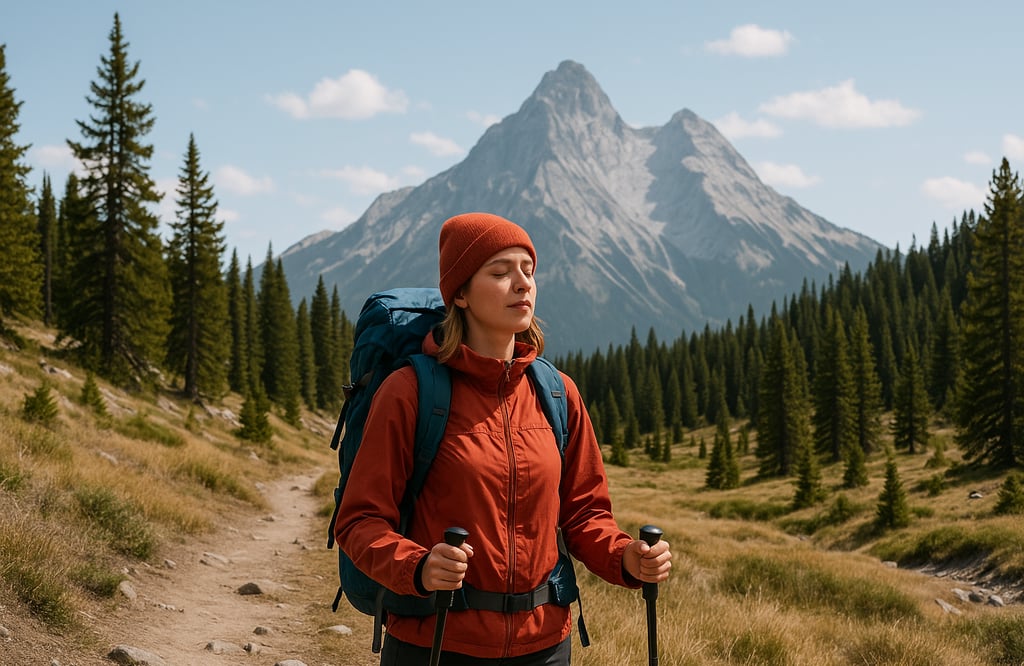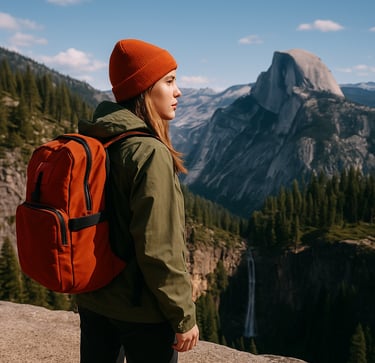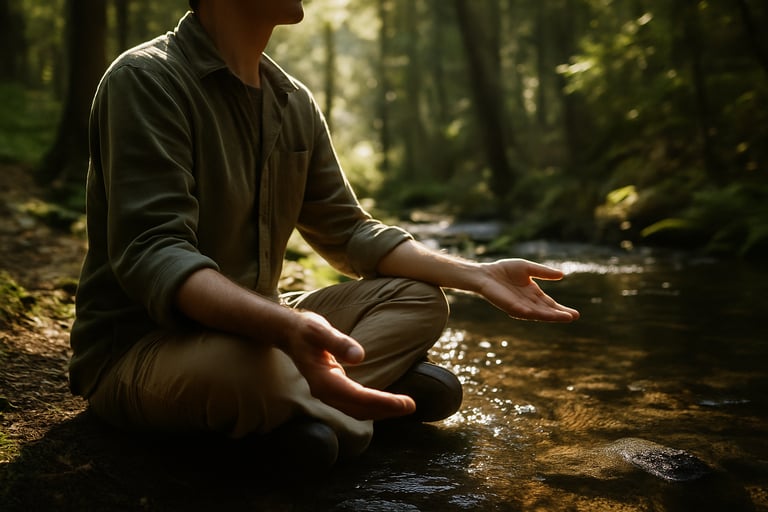Mindfulness in Nature: How to Stay Present and Focused in the Wilderness
Learn how to stay focused and mentally grounded with mindfulness in the wilderness. This guide shares simple, powerful tools to reduce stress, improve awareness, and stay calm in outdoor survival situations.


Mindfulness in Nature: How to Stay Present and Focused in the Wilderness
Being out in nature offers more than just fresh air and scenic views. For many, it’s a powerful way to clear the mind, reset emotionally, and reconnect with the present moment. Practicing mindfulness in the wilderness can improve your focus, calm your nerves in tense situations, and help you fully absorb the richness of your surroundings. This is especially important during long hikes, solo camping trips, or survival situations where mental presence matters just as much as physical preparedness.
Let’s walk through practical ways you can use mindfulness techniques while out in the wild — whether you’re deep in a forest, high in the mountains, or simply resting beside a river.
Why Mindfulness Matters in the Outdoors
The wilderness naturally invites awareness. With fewer distractions and a steady rhythm to your movements, it becomes easier to focus on the now. But stress, fatigue, or fear can cloud your thinking fast, especially in survival scenarios.
Practicing outdoor mindfulness helps you stay alert without panic, make clearer decisions, and fully experience the environment around you. Tuning in to your breath, your steps, the breeze, or the sound of wildlife can anchor you when emotions run high. These moments of grounded presence are not just peaceful, they’re essential for maintaining your composure when things get tough.
For more on how to deal with high-stress situations in the backcountry, check out Decision-Making Under Pressure: Sharpening Mental Clarity in Survival Situations. It explains how to keep your thinking sharp even when your nerves are stretched thin.
Simple Mindfulness Exercises for Hikers and Campers
One of the easiest ways to stay mindful outdoors is by practicing breath awareness. As you walk, match your breath to your steps. Try inhaling for four steps and exhaling for four steps, creating a rhythm that calms your nervous system.
Another technique is sensory scanning. Pause at intervals during your hike and ask yourself what you hear, smell, see, and feel. Don’t judge or analyze — just notice. This helps bring your attention away from stress and back to your body and environment.
A third tool is intentional walking. Slow your pace and focus entirely on how your foot connects with the ground, how your muscles move, and how the landscape changes as you pass. Doing this for even five minutes can shift your mindset from scattered to centered. These same techniques can also help reduce the fog that comes from overexertion or stress (Mental Fatigue in Survival Scenarios: Recognizing Warning Signs and Coping Tools.
Using the Environment to Anchor Your Focus
Nature offers built-in cues for mindfulness. The sound of rustling leaves, birdsong, or a flowing creek can become focal points. Try sitting silently for ten minutes and tuning in to one sound at a time. If your mind wanders, gently bring it back to the chosen sound without judgment.
Water is especially grounding. Sitting by a stream or lake and watching ripples or reflections helps the mind naturally slow down. Firelight can have the same effect; staring into a campfire at dusk can encourage calm reflection and emotional release.
Managing Mental Distraction in High-Stress Moments
In survival situations, it’s normal for the mind to race or jump to worst-case scenarios. This is when mindfulness becomes more than a calming tool, it becomes a survival skill. Our article Mental Toughness for Wilderness Survival explores how these emotional tools can be just as life-saving as physical survival skills when things go sideways.
Recognize when your thoughts are spiraling, and ground yourself by focusing on your senses. Repeat a short phrase like “I’m here, I’m okay, I know what to do” to reset your mental state.
Breathing techniques like “box breathing” — where you inhale, hold, exhale, and hold each for four seconds — are excellent for managing adrenaline in high-pressure moments. Practicing these ahead of time gives you tools to fall back on when you need them most.
Mindfulness as a Daily Survival Tool
The more you practice mindfulness, the more it becomes second nature, like checking your gear or scanning your route. It builds emotional resilience, improves sleep, reduces fear, and sharpens your attention. In the wilderness, these benefits translate directly to better awareness, decision-making, and enjoyment of the experience.
Mindfulness doesn’t require you to meditate on a mountain for hours. It just asks you to show up, fully, for what’s in front of you. Whether you’re navigating tough terrain or sitting quietly under a pine tree, the skill of being present is one of the most powerful assets you can carry with you into the wild.




© 2025. All rights reserved About | Privacy Policy | Terms and Conditions | Affiliate Disclosure | Disclaimer


